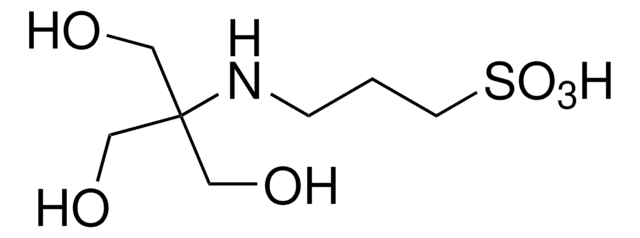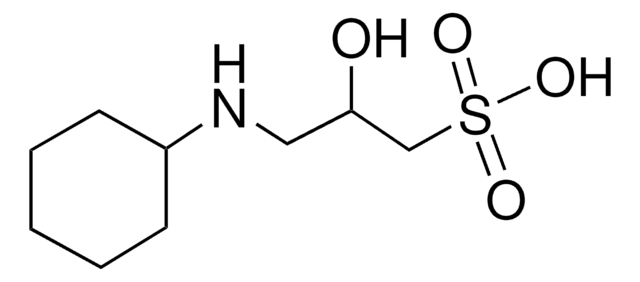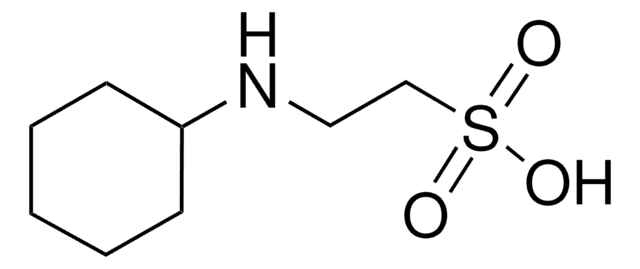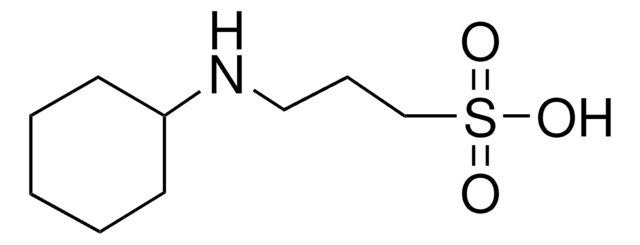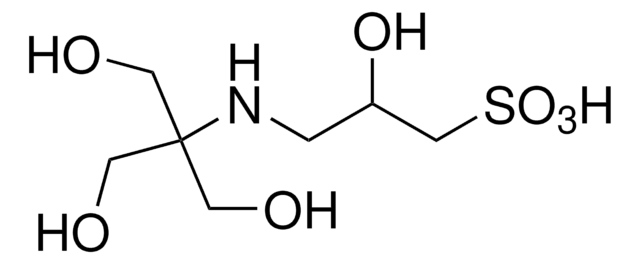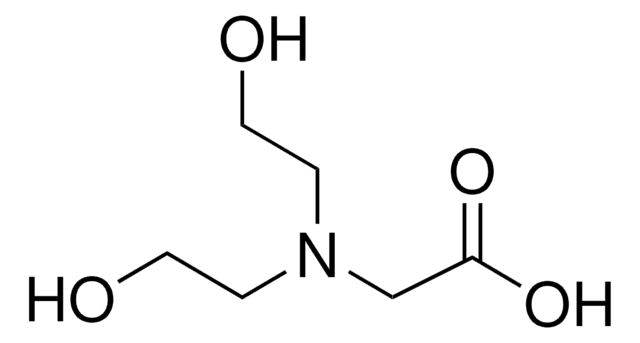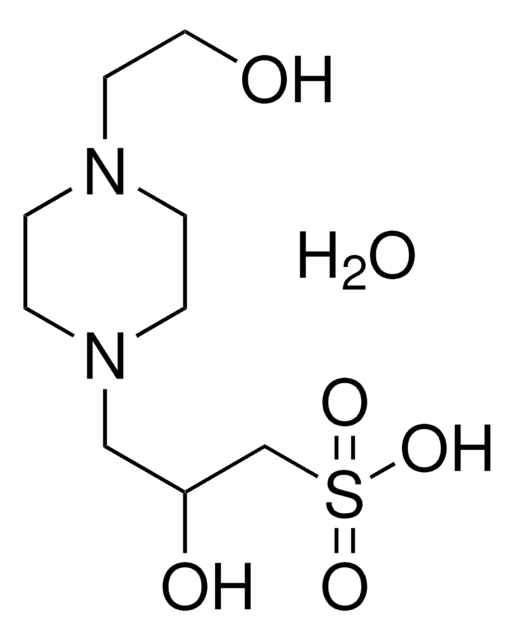T5130
TAPS
≥99.5% (titration)
Synonym(s):
N-[Tris(hydroxymethyl)methyl]-3-aminopropanesulfonic acid, [(2-Hydroxy-1,1-bis(hydroxymethyl)ethyl)amino]-1-propanesulfonic acid
About This Item
Recommended Products
Quality Level
Assay
≥99.5% (titration)
form
crystalline powder
useful pH range
7.7-9.1
pKa
8.4
mp
230-235 °C (dec.)
solubility
water: 0.5 g/mL, clear, colorless
application(s)
diagnostic assay manufacturing
SMILES string
OCC(CO)(CO)NCCCS(O)(=O)=O
InChI
1S/C7H17NO6S/c9-4-7(5-10,6-11)8-2-1-3-15(12,13)14/h8-11H,1-6H2,(H,12,13,14)
Looking for similar products? Visit Product Comparison Guide
1 of 4
This Item | T9659 | T9269 | T0647 |
|---|---|---|---|
| Quality Level 400 | Quality Level 400 | Quality Level 200 | Quality Level 200 |
| form crystalline powder | form powder | form crystalline powder | form crystalline powder |
| application(s) diagnostic assay manufacturing | application(s) diagnostic assay manufacturing | application(s) diagnostic assay manufacturing | application(s) diagnostic assay manufacturing |
| solubility water: 0.5 g/mL, clear, colorless | solubility H2O: 1 M, clear, colorless | solubility warm water: 0.333 g/mL, clear to slightly hazy, colorless | solubility water: 0.33 g/mL, clear to slightly hazy, colorless |
| mp 230-235 °C (dec.) | mp 230-235 °C (dec.) | mp - | mp - |
Storage Class Code
11 - Combustible Solids
WGK
WGK 3
Flash Point(F)
>230.0 °F - closed cup
Flash Point(C)
> 110 °C - closed cup
Personal Protective Equipment
Certificates of Analysis (COA)
Search for Certificates of Analysis (COA) by entering the products Lot/Batch Number. Lot and Batch Numbers can be found on a product’s label following the words ‘Lot’ or ‘Batch’.
Need A Sample COA?
This is a sample Certificate of Analysis (COA) and may not represent a recently manufactured lot of this specific product.
Already Own This Product?
Find documentation for the products that you have recently purchased in the Document Library.
Customers Also Viewed
Our team of scientists has experience in all areas of research including Life Science, Material Science, Chemical Synthesis, Chromatography, Analytical and many others.
Contact Technical Service
